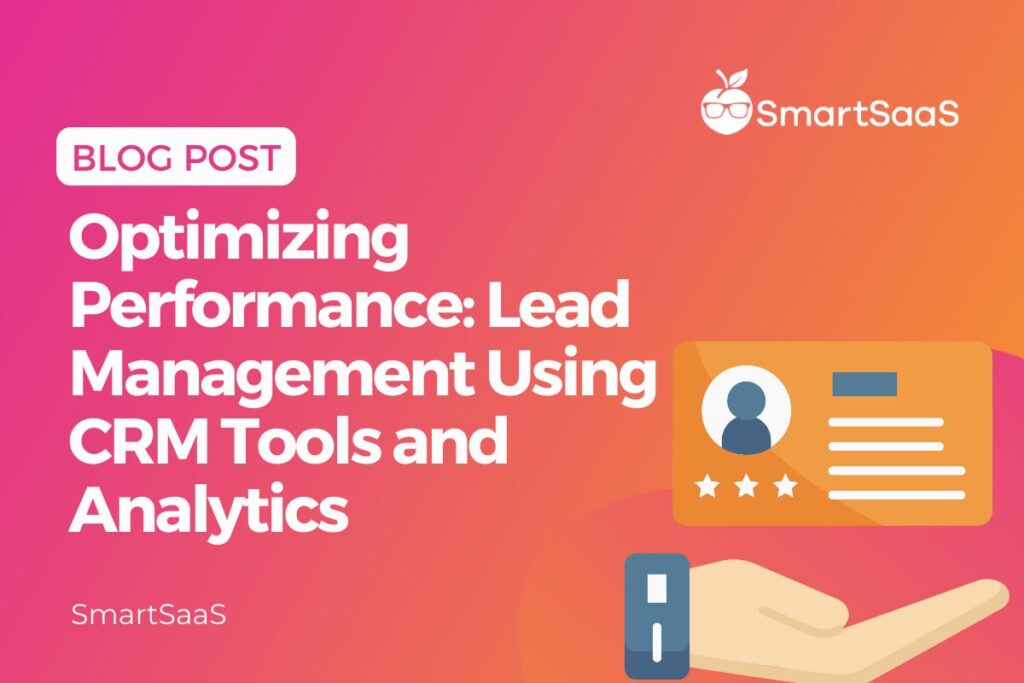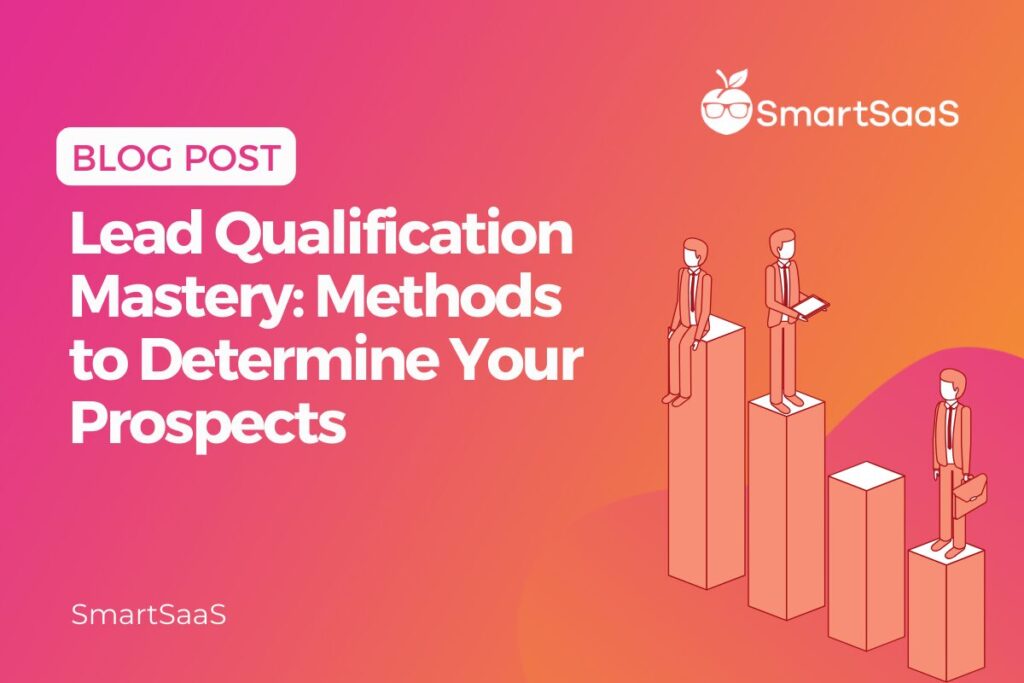Optimizing Performance: Lead Management Using CRM Tools and Analytics

A CRM is a system that lets you understand your customers on a whole new level, predict their needs, and build relationships.
It’s more than just software – it’s a best and proven strategy that transforms how companies connect with their customers.
Here are some examples of popular CRM systems:
One of the most well-known CRM platforms, Salesforce offers a comprehensive suite of tools that cover sales, marketing, service, and more. It centralizes customer information, tracks interactions, and provides analytics to help businesses make informed decisions.
HubSpot’s CRM is known for its user-friendly interface and integration with marketing and sales tools. It enables businesses to manage contacts, track interactions, and automate various tasks, making it easier to nurture leads and manage customer relationships.
Zoho CRM provides a range of features, such as lead and contact management, sales automation, and analytics. It’s designed to help businesses streamline their sales processes and gain insights into customer behavior to improve engagement.
The Role of CRMs in improving your lead management
CRMs offers a gateway to amplifying growth, nurturing loyalty, and redefining success. Here is how CRMs may benefit you as a sales professional or a business owner trying to increase the number of lead conversions.
Help You Decide Smart Choices
CRM systems help you make better decisions about your leads. By looking at information from different places, you get a complete picture of how leads act and what they like. This helps you decide how to talk and manage them better so more of them become customers.
CRM systems often incorporate ingenious lead scoring and monitoring functionalities. This innovative capability empowers you to allot scores to individual leads, hinged on their engagement and conversion potential.
By meticulously monitoring these scores over time, you gain the insight to channel your focus toward leads with the paramount promise, supercharging efficiency and magnifying your success in clinching deals and fostering substantial revenue streams.
Seeing Things Right Away
With CRMs, you can see important information about your leads right away. There are special screens that show you how many leads turned into customers, how they’re moving through the sales process, and how much they’re engaging with your company. These screens can be changed to show just what you want so you can quickly decide what to do next.
Talking to Leads in a Personal Way
CRMs also helps you talk to leads in a way that feels personal. It uses automated plans to send messages based on what leads do.
This enables you to keep in touch with them and send them the correct information at the right time. This is important because it makes leads more likely to buy from you.
Making Work Easier
CRMs makes managing leads easier. It automatically gathers lead information, schedules when to follow up, and scores leads. This means your sales team has more time to build relationships and close deals instead of doing tedious tasks.
Not Missing Any Chances
With CRMs, you can keep track of leads and make sure you don’t forget to talk to any of them. You have a history of all their actions and behaviors, so you know when to reach out. This helps you be quick and responsive, which makes leads more likely to say yes.
Elevate Sales Management with Lead Analytics
How do we define lead analytics?
Think of your potential customers as puzzle pieces scattered across the market. Now, you have the ability to not only find each piece but skillfully connect them, revealing a complete picture of your business success. Lead tracking and analytics are the ultimate tools that empower you to assemble that intricate puzzle of sales generation.
Can lead analytics help your organisation’s lead engagement and management?
Lead tracking and analytics are the guiding principles that steer your organization toward heightened efficiency and refined customer engagement. Below are the benefits of having analytics and tracking to your lead management:
Valuable Insights for Informed Decisions
Lead tracking analytics provide valuable insights to help you stay organized and effectively manage your leads. With the help of CRM systems and analytics tools, you can generate reports and visualizations highlighting key metrics and trends. These insights allow you to make data-driven decisions, identify areas for improvement, and allocate resources effectively.
For example, you can track the conversion rate at each sales funnel stage. Suppose you notice a significant drop-off at a particular stage. In that case, you can investigate and make necessary adjustments to improve conversion rates. Similarly, you can track the source of your leads and identify which marketing channels are generating the highest quality leads.
This information can help you allocate your marketing budget effectively and focus on channels that yield the best results.
Enhanced Marketing and Sales Campaigns
Lead tracking analytics also enable you to measure the effectiveness of your sales and marketing campaigns.
You can determine which campaigns drive the most qualified leads by analyzing the conversion rates and engagement levels of leads generated from different campaigns.
This allows you to optimize your marketing strategies and allocate resources to campaigns with the highest ROI.
Race Towards Rapid Wins
The tools allow you to pinpoint exactly where leads are dropping off or getting stuck in your sales funnel. With this intel, you can smooth out those rough patches, removing obstacles and slowing the journey from curious prospects to delighted customers.
Pipeline Management for Optimal Business Growth
The success of your business depends on how well you handle your sales pipeline. This pipeline shows the different stages a potential customer goes through, from when they show interest to when they purchase.
By managing this process well, you ensure you don’t miss out on potential customers and increase the chances of turning leads into buyers.
In this section, we’ll explain why managing your sales pipeline matters and how it helps you stay organized and keep track of your interactions with potential customers.
Let’s start by clarifying what sales pipeline management is
Sales Pipeline Management is the art of attracting leads and nurturing them through a series of meaningful interactions.
It’s about transforming mere interest into enthusiastic engagement and then sealing the deal with a flourish. Like a sales storyteller, you’ll craft a narrative that takes your customers on a compelling adventure, leaving them eager to reach that final chapter of purchasing.
This process isn’t just a series of steps – it’s your strategy for success. By mastering the art of Sales Pipeline Management, you’re ensuring no potential customer slips through the cracks and maximizing your chances of turning them into loyal advocates for your brand.
7 stages of sales pipeline management
The stages might vary slightly depending on the industry, business model, and specific sales process. So you can modify this pipeline that will fit your sales structure.
Prospecting
Identify potential leads or customers interested in your product or service. This can involve research, cold outreach, and lead generation.
Qualification
You are assessing whether the identified leads are a good fit for your offering. This stage often involves gathering information about the lead’s needs, budget, authority, and timeline (BANT criteria).
Needs Analysis
Understanding the specific needs and pain points of the qualified leads. This helps tailor your pitch to address their unique requirements.
Proposal/Presentation
Creating and presenting a customized solution or proposal to the lead, showcasing how your product or service can fulfil their needs and provide value.
Negotiation
Discussing terms, pricing, and any potential adjustments to the proposal. Negotiations aim to find a mutually beneficial agreement that satisfies both the seller and the buyer.
Closed/Won
Securing the deal and obtaining the customer’s commitment to move forward with the purchase. This could involve signing contracts, making payments, and finalizing any remaining details.
Follow-up and Post-Sale
After the deal is closed, maintaining a positive relationship with the customer is crucial. Providing exceptional post-sale support, addressing any concerns, and seeking opportunities for upselling or cross-selling can all contribute to long-term customer satisfaction and loyalty.
What does sales pipeline management can bring to your business?
Integrating sales pipeline management into your business operations can remarkably improve how accurately you predict your revenue and how smoothly your sales process flows. Below are the advantages that sales pipeline management does to your business:
- Sales pipeline management helps you stay organized and ensures no leads fall through the cracks. Categorizing leads based on their stage in the pipeline can quickly identify which leads need attention and take appropriate actions. For example, suppose a lead is stuck in a particular stage for too long. In that case, you can provide the necessary support to move them forward.
- Gives you pipeline visualization features, allowing you to visualize your sales pipeline at a glance. This visual representation provides a clear overview of each stage’s number of leads and progress. It also enables you to identify potential bottlenecks or areas for improvement in your sales process.
- Sales pipeline management allows you to track leads’ interactions and ensure no missed opportunities. You can set reminders for follow-ups, schedule meetings, and log all communication within the CRM system. This centralized database ensures that every interaction is recorded and easily accessible, providing a complete history of each lead’s journey.
Tap into the Value of Sales Forecasting and Reporting
Before discussing its benefits, let’s clearly define this method that has the potential to revolutionize your business approach and ignite a surge of success in your sales process.
Demystifying sales forecasting and reporting
Sales Forecasting predicts future sales trends through a blend of historical data, market analysis, and insightful factors. This foresight empowers businesses to make proactive decisions, allocate resources judiciously, and adapt swiftly to market shifts.
On the other hand, Reporting transforms raw data into a symphony of insights, revealing the rhythm of performance, trends, and triumphs. It guides businesses towards better decision-making as they track key performance indicators and metrics, unearth opportunities, and refine strategies.
Amazing outcomes of using sales forecasting and reporting
Sales forecasting and reporting work together to improve lead management effectiveness and precision. Additionally, this approach offers the following advantages:
Enhanced Revenue Projection
Sales forecasting and reporting enable organizations to predict future revenue streams more accurately. By analyzing historical sales data and market trends, businesses can anticipate potential income within specific timeframes.
This empowers them to set realistic revenue goals, allocate resources effectively, and make informed strategic decisions to drive growth.
Optimized Resource Allocation
The synergy of sales forecasting and reporting guides resource planning and allocation. By understanding anticipated demand and lead conversion rates, businesses can allocate resources like manpower, budget, and marketing efforts with precision.
This prevents overallocation or underutilization, ensuring the organization’s resources are aligned to achieve maximum efficiency and revenue generation.
Strategic Refinement Through Insights
Sales reporting provides valuable insights into sales performance metrics, such as conversion rates, customer acquisition costs, and lead engagement patterns.
This data-driven approach allows organizations to identify bottlenecks, inefficiencies, and areas for improvement within their sales processes.
With these insights, businesses can refine their strategies, streamline operations, and enhance their overall sales effectiveness.
Tailored Lead Engagement
Sales reporting uncovers the art of lead interactions by deciphering hidden patterns and communication preferences. Organizations can find the most effective communication channels, common objections, and factors driving conversion rates through meticulous analysis.
To Wrap Things Up
Customer Relationship Management (CRM) systems advanced tools are designed to efficiently track leads, analyze critical data, oversee sales progress, and produce detailed sales forecasts and reports. By incorporating these systems, you can effectively manage and refine your interactions with customers.
Utilizing these powerful tools and tactical methods, you have the opportunity to streamline your workflow, boost productivity, and increase the likelihood of transforming potential clients into loyal customers. These invaluable assets are beneficial for both dynamic startups and established large-scale enterprises, offering crucial support for sustained success in the highly competitive business landscape of today.






Responses